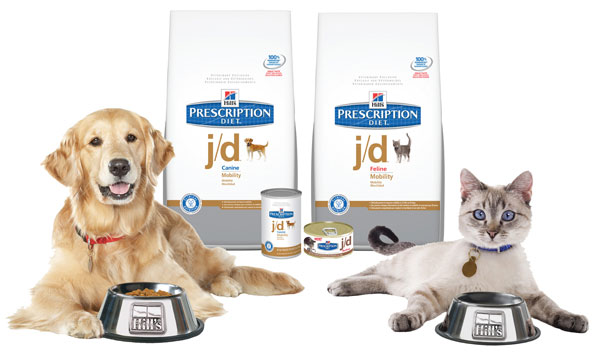If your pet has arthritis they will have sore joints. When we have sore joints we grumble and moan. How can Halifax help my arthritic pet? There is no cure for arthritis but virtually all pets can get incredibly significant improvement in their quality and enjoyment of life using one or more modalities from our 12-point arthritis plan.
Our online Halifax Canine Mobility Assessment or Halifax Feline Mobility Assessment can help you recognise if your pet may be in any joint pain.
If you think your pet is showing signs of arthritis call us and make an appointment. Not all soreness or lethargy is caused by arthritis. We can find out just what is going on and sort out the best treatment plan.
The Halifax 12 Point Plan to Manage Arthritis
- Weight management. Keeping cats and dogs lean throughout life dramatically reduces the incidence of arthritis. It is not just the extra wear and tear of carrying more weight. Fat produces a slew of inflammatory chemicals that promote inflammation throughout the body, including in joints. Even after pets have developed osteoarthritis weight reduction reduces the signs of arthritis and often means easier control of pain.
- Exercise management is a powerful tool for dogs. This doesn’t always mean less exercise, but rather avoiding impactive exercise like stick-chasing, running and jumping. Having 2-4 shorter walks rather than one longer walk is helpful.
-
Hill’s J/D is a diet formulated specifically for arthritis. It is so effective it now has registration as a treatment for arthritis from the ACVM Board which manages drug registration for animals in New Zealand. Its effectiveness comes from nutrigenomics, the study of how nutrients influence genetic expression. In the case of j/d it is getting the balance of nutrients, and especially the ratio of Omega 3 to Omega 6 fatty acids just right so cartilage-destroying enzymes like aggrecanase are not released in arthritic joints.
- Non-steroidal anti-inflammatory drugs (NSAIDs) are the mainstay of treatment for arthritis in human medicine. They have two big benefits. They give prompt relief from pain, and the suppression of inflammation helps block the vicious cycle whereby inflammatory enzymes and chemicals break down the protective cartilage in joints as well as the lubricant proteins in joint fluid. The last twenty years have seen a breakthrough in this area of treatment for pets. Dogs, and especially cats, cannot tolerate most of the NSAIDs used to treat humans, often developing life-threatening gastrointestinal or kidney problems. Now that has changed and there are four NSAIDs that are very safe to use long term in dogs, and just one in cats. We often use NSAIDs as a short treatment trial to assess the level of arthritic pain a pet is suffering. So many supposedly ‘old’ pets promptly regain such a zest for life that their owners can see the value in treating the arthritis. There also additional medications we can add to help with pain.
- Pentosan polysulphate is normally given as a course of four injections, a week apart, under the skin. It has several beneficial effects in arthritic joints, mainly in settling down inflammation and improving the lubricating quality of the joint fluid.
- Physiotherapy can help. Joint pain often results in the tightening of muscles around the joint and most pets appreciate gentle massage of the muscles above and below the joint. A good thing to do while watching TV. After a period of massage try flexing and extending the joint through its full range of motion. Using a wheat bag or hottie to warm up the muscles before you start is helpful.
- A warm, well-padded bed helps most arthritis sufferers. In particular getting dogs up off the floor pays dividends.
- Nutraceuticals is the name given to those dietary supplements which can relieve signs of illness. There is quite a long list of nutraceuticals credited with easing joint discomfort and we have prescribed many over the years. Vitamin E, selenium, MSM, deer velvet, green lipped mussel extract, glucosamine, chondroitin, shark cartilage, omega 3 fatty acids – the list goes on. The reported results are highly variable. How come? Firstly, we all believe what we want to believe, so the placebo effect is seen in pet treatment too. Secondly, there is a lot of variation in the quality of nutraceuticals sold. Thirdly, some nutraceuticals work best in synergy with others. When properly designed studies have been done there is support for Omega 3 fatty acids, green lipped muscle extract and just one glucosamine/chondroitin formulation.
- Surgery. This is the answer for a few specific joint problems. In particular, ruptured knee ligaments, especially with meniscal injury, unstable or luxating kneecaps, and the problems of chips breaking off in the joints of rapidly growing young dogs. Joint replacement can also be a last resort when other treatment options are no longer effective. However most osteoarthritis is managed without surgery.
- Subtle home modifications such as anti-slip mats, steps and ramps can help restore independence, give your pet back their confidence and ease strain and pressure on arthritic joints. For cats or small dogs, a ramp or footstool to get up on a bed or the sofa can make a huge difference.
- Acupuncture can help arthritic joints. Most dogs tolerate acupuncture quite well, bt it is not for the needle shy!
- Beransa and Solensia: A very new product for cats and dogs, that targets nerve growth factor (which contributes to pain and inflammation) with a specific antibody. This treatment involves a monthly injection.
Stay warm!
Best wishes from the Halifax Team

 Hill’s J/D is a diet formulated specifically for arthritis. It is so effective it now has registration as a treatment for arthritis from the ACVM Board which manages drug registration for animals in New Zealand. Its effectiveness comes from nutrigenomics, the study of how nutrients influence genetic expression. In the case of j/d it is getting the balance of nutrients, and especially the ratio of Omega 3 to Omega 6 fatty acids just right so cartilage-destroying enzymes like aggrecanase are not released in arthritic joints.
Hill’s J/D is a diet formulated specifically for arthritis. It is so effective it now has registration as a treatment for arthritis from the ACVM Board which manages drug registration for animals in New Zealand. Its effectiveness comes from nutrigenomics, the study of how nutrients influence genetic expression. In the case of j/d it is getting the balance of nutrients, and especially the ratio of Omega 3 to Omega 6 fatty acids just right so cartilage-destroying enzymes like aggrecanase are not released in arthritic joints. 
Recent Comments